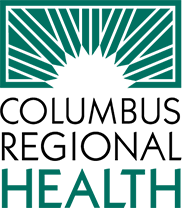Antibiotics: the double-edged sword
In 1928, Alexander Fleming accidentally discovered Penicillin, the game changer for the treatment of the seemingly unbeatable infections. Today, there are more than 100 different antibiotics at our disposal to treat both minor and major infectious conditions. Many deaths and disabilities have been prevented by this wonderful group of drugs. Life threatening conditions, such as sepsis, are being prevented and treated more readily because of the timely usage of the antibiotics.
However, there is another side to this group of chemicals that isn’t so encouraging: side effects and resistance.
Side effects of antibiotics can be anything from a mild itchy rash to secondary serious infections, such as Clostridium Difficile (C.diff), which can be severe and may require hospitalization. So, how do we maximize the goodness of these antibiotics and shed the risks as much as possible?
Here is some guidance:
Always consult with your health care provider to confirm if the infection you are suffering from is viral or bacterial, because if it is the latter, early treatment is encouraged.
Another risk associated with antibiotic misuse are side-effects that are completely unrelated to what the antibiotic was used to treat in the first place. For example, one antibiotic commonly used in urinary tract infections, has a potential side effect that can cause Achilles tendon ruptures, which can be disabling. Imagine a situation where you get treated for a urinary tract infection but end up with an Achilles tendon rupture which will take longer to heal, sometimes months to a year!
Knowing all the above, I sincerely hope that in the future, the use of antibiotics will become more thoughtful and appropriate. It takes a partnership between patient and doctor to accomplish this. After all, the first rule in medicine is "Do No Harm." So the next time you visit your doctor with an infection, be mindful of the risks versus benefits of these pharmacological giants.
 Dr. Ramasundaram has been an Internal Medicine physician for 7 years, and is the Antibiotic Stewardship Program Coordinator for Columbus Regional Health Family and Internal Medicine.
Dr. Ramasundaram has been an Internal Medicine physician for 7 years, and is the Antibiotic Stewardship Program Coordinator for Columbus Regional Health Family and Internal Medicine.
Her interests include improving overall patient health through healthy lifestyle, updated medical experience and accessible education.
View All Success Stories
However, there is another side to this group of chemicals that isn’t so encouraging: side effects and resistance.
Side effects of antibiotics can be anything from a mild itchy rash to secondary serious infections, such as Clostridium Difficile (C.diff), which can be severe and may require hospitalization. So, how do we maximize the goodness of these antibiotics and shed the risks as much as possible?
Here is some guidance:
1. Know your infections:
Two main types of infection are also the most commonly confused: viral versus bacterial. Most of the infections that plague the upper respiratory tract are viruses such as rhinovirus and adenovirus. When we fall sick from infections, we tend to believe that the instant culling of these germs is the best strategy. It is; however, we do not have the means to do that against viruses. Antibiotics are only effective in treating bacterial infections; they cannot kill viruses. The good news is that most of these viruses do tend to get better with time, usually within 7 to 10 days. While waiting for these symptoms to go away on their own, you do not have to suffer – you can try over-the-counter medications for symptom relief while the virus runs its course.Always consult with your health care provider to confirm if the infection you are suffering from is viral or bacterial, because if it is the latter, early treatment is encouraged.
2. Remember, antibiotics are chemicals:
All antibiotics have possible side effects. These, as hinted above, can be minor skin reactions to life-threatening cardiac risks. Antibiotics should be used only when needed and avoided whenever a safe, physician-guided alternative is offered. For example, C.diff is a bacterial infection, adding up to at least half a million cases per year in the United States, which is occurring of late, in the community with no need for an exposure to antibiotics; however, it typically occurs after antibiotic usage. Although antibiotics are used to treat infections, they are impartial and do also risk the destruction of some of the good bacteria in our bodies, such as the allies in the stomach and digestive system.Another risk associated with antibiotic misuse are side-effects that are completely unrelated to what the antibiotic was used to treat in the first place. For example, one antibiotic commonly used in urinary tract infections, has a potential side effect that can cause Achilles tendon ruptures, which can be disabling. Imagine a situation where you get treated for a urinary tract infection but end up with an Achilles tendon rupture which will take longer to heal, sometimes months to a year!
3. Be aware of super bugs:
In 2020, people adapted to navigate SARS-CoV-2 (the virus that caused COVID-19) using masks, alcohol sanitizer and social distancing. In the same way, everything else from bacteria to viruses find ways to walk among us without falling dead at the intervention of antibiotics. Viruses, particularly, find ways to survive constantly – therefore, the mindless, inappropriate use of antibiotics only hastens their ability to become resistant.Knowing all the above, I sincerely hope that in the future, the use of antibiotics will become more thoughtful and appropriate. It takes a partnership between patient and doctor to accomplish this. After all, the first rule in medicine is "Do No Harm." So the next time you visit your doctor with an infection, be mindful of the risks versus benefits of these pharmacological giants.
 Dr. Ramasundaram has been an Internal Medicine physician for 7 years, and is the Antibiotic Stewardship Program Coordinator for Columbus Regional Health Family and Internal Medicine.
Dr. Ramasundaram has been an Internal Medicine physician for 7 years, and is the Antibiotic Stewardship Program Coordinator for Columbus Regional Health Family and Internal Medicine. Her interests include improving overall patient health through healthy lifestyle, updated medical experience and accessible education.

CRH News
-
Final Two CRH Practices Move to NexusPark
Apr 18, 2024, 12:36 PM by DeClue, A.CRH at NexusPark officially opened in late January, and more than 15 provider practices and services have relocated to the space in the first quarter of 2024.Full story -
Wound Center Receives National Awards
Apr 3, 2024, 15:21 PM by DeClue, A.The Wound Center achieved outstanding clinical outcomes for twelve consecutive months, including a patient satisfaction rate higher than 92 percentFull story -
CRH conducting independent public health survey
Mar 26, 2024, 12:41 PM by DeClue, A.Columbus Regional Health is conducting a Health Status Survey by telephone and online from March through May.Full story -
Columbus Regional Health offers new online health portal for expectant parents
Mar 25, 2024, 14:21 PM by DeClue, A.With CRH’s new My Pregnancy Journey, patients can use their computers or mobile devices to review digital prenatal education from a trusted source and track important decisions and tasks that need to happen at specific pregnancy milestones.Full story -
Additional Medical Practices Move to NexusPark
Mar 25, 2024, 11:24 AM by DeClue, A.More practices and services relocate to NexusPark facility.Full story -
Eclipse office hours for CRH-affiliated services
Mar 21, 2024, 14:01 PM by Laker, J.Office hours for CRH-affiliated practices and service lines for the April 8, 2024, Total Solar Eclipse.Full story

